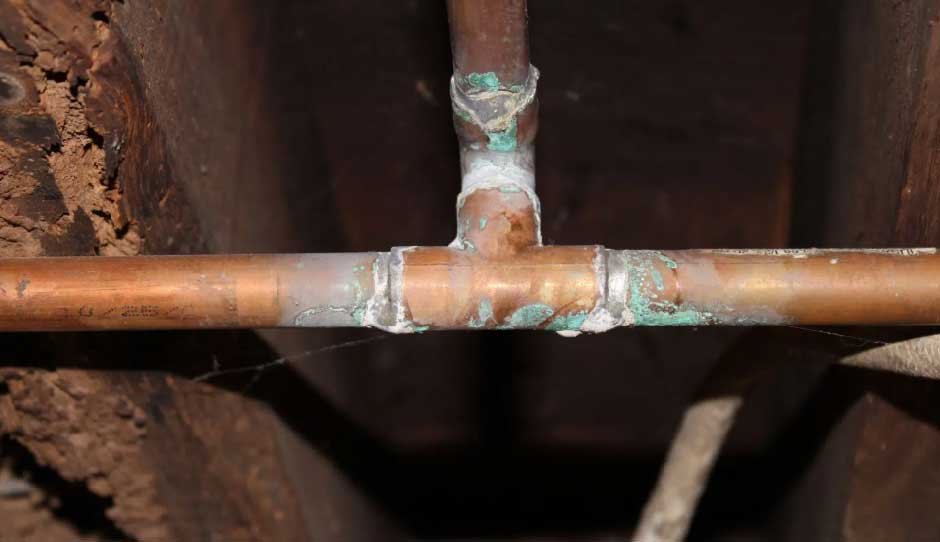Skip to the good bit
ToggleImagine turning on your faucet to find discolored water or dealing with a sudden, unexpected leak. These could be signs of pipe corrosion, a problem many homeowners face without even realizing it. Pipe corrosion doesn’t just compromise the efficiency of your plumbing system; it can also cause extensive damage and pose health concerns.
Understanding whether your home is at risk and taking proactive steps can save you significant stress and money. Read on to learn about pipe corrosion, common causes, warning signs, and how to protect your home’s plumbing system.
If you’re in the area, there are a handful of companies that offer professional plumbing services in Peoria, AZ that can address any concerns you might have.
What is pipe corrosion?
Pipe corrosion occurs when the material of your pipes starts to deteriorate due to chemical reactions, usually between the pipe’s metal and the surrounding environmental factors. Over time, corrosion can weaken the pipes, leading to leaks, blockages, and even burst pipes in severe cases.
Common causes of pipe corrosion
Corrosion can happen for a variety of reasons, and understanding these causes can help you take preventive action:
Water quality
Common culprits are hard water, rich in calcium and magnesium, and acidic water (low pH). These create conditions that erode the pipe’s inner surfaces over time.
Oxygen in water
Water containing dissolved oxygen reacts with the metal in your pipes, resulting in rust and corrosion. This is particularly common in homes with steel or iron pipes.
Plumbing age
Older plumbing systems, especially those with galvanized steel pipes, are more prone to corrosion. Modern plumbing materials like PEX or copper are less vulnerable but not immune, even under certain conditions.
Chemical interactions
When certain materials are used together in a plumbing system, for example, copper and galvanized steel pipes without proper connectors, galvanic corrosion can occur.
Signs your home may be at risk for pipe corrosion
Most homeowners don’t think about their plumbing until something goes wrong. However, several signs can indicate your pipes are corroding:
Rust-colored water
If your water has a reddish or brownish tint, it could mean that your pipes are rusting from within.
Unpleasant taste or smell
Corroded pipes can impart a metallic taste or odd smell to your drinking water.
Frequent leaks
Recurring leaks, especially in different areas of your plumbing system, could indicate that the pipes are compromised.
Reduced water pressure
Corrosion can lead to blockages inside the pipes, restricting water flow and lowering the overall water pressure in your home.
Pipe discoloration and flaking
Inspect any visible pipes in your home. Signs of discoloration, rust, or flaking mean corrosion might already be underway.
Risks of ignoring pipe corrosion
Neglecting this issue can lead to serious consequences:
- Structural damage: Leaking water can damage walls, floors, and ceilings, resulting in expensive repairs.
- Health concerns: Corroded pipes can introduce harmful contaminants such as lead and rust into your drinking water.
- High water bills: Undetected leaks caused by pipe corrosion can drastically increase water usage and monthly costs.
- Emergency repairs: Severe corrosion can lead to pipe bursts, often requiring immediate and costly emergency plumbing services.
Preventing pipe corrosion in your home
Fortunately, there are steps you can take to minimize the risk of pipe corrosion and extend the life of your plumbing system:
1. Test your water quality
Regularly test the pH and mineral content of your water. If your water is too hard or acidic, installing a water softener or conditioning system can help protect your pipes.
2. Replace aging pipes
If your home uses older plumbing materials like galvanized steel, consider upgrading to modern, corrosion-resistant materials such as PEX or CPVC.
3. Use professional inspections
Periodic plumbing inspections can identify corrosion early, allowing you to address minor issues before they become major problems. Professional plumbers can also test your system for signs of galvanic corrosion if dissimilar metals are present.
4. Install a water filtration system
A whole-home filtration system can remove sediments and other corrosive agents from your water, reducing wear and tear on your pipes.
5. Maintain your plumbing system
Flush out your water heater annually to prevent sediment buildup, and schedule routine maintenance for your plumbing fixtures to reduce stress on your pipes.
Conclusion
Pipe corrosion might not be at the top of your home maintenance checklist, but addressing it early can save you from significant headaches down the road. The signs are often subtle, but the impacts can be far-reaching. Regular inspections, water quality testing, and timely upgrades are essential to keeping your home’s plumbing in top shape.
If you suspect your home may be at risk for pipe corrosion or you’re simply looking for peace of mind, consider reaching out for professional plumbing services. Their licensed experts can assess your plumbing system and provide tailored solutions to ensure your home stays safe and efficient.
Don’t wait for the warning signs to worsen. Protect your home and your wallet by taking action today!







